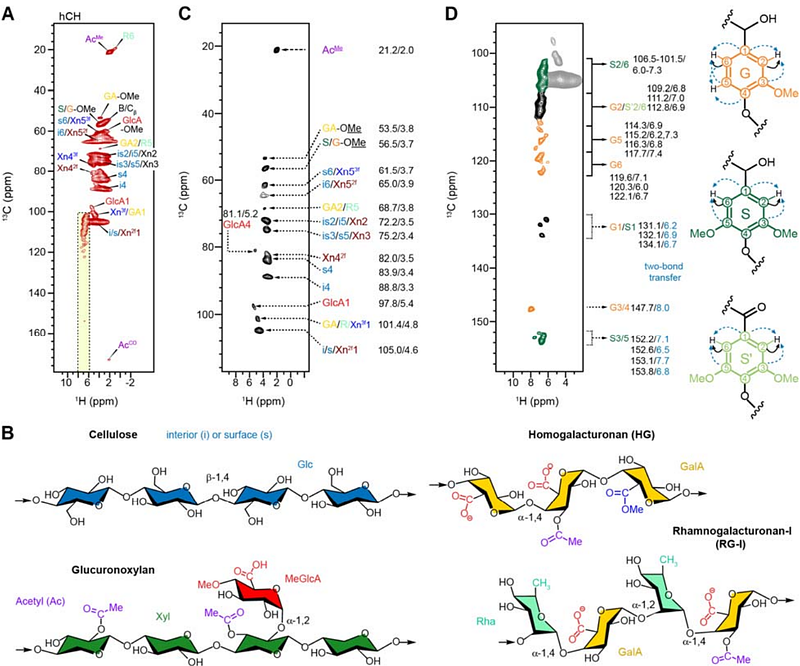Rapid High-Resolution Analysis of Polysaccharide-Lignin Interactions via Proton-Detected Solid-State NMR with Application to Eucalyptus and Spruce

Rapid High-Resolution Analysis of Polysaccharide-Lignin Interactions via Proton-Detected Solid-State NMR with Application to Eucalyptus and Spruce
Xiao, P.; Yarava, J. R.; Debnath, D.; Sahu, P.; Xu, Y.; Xie, L.; Holmes, D.; Wang, T.
AbstractThe plant secondary cell wall, a complex matrix composed of cellulose, hemicellulose, and lignin, is crucial for the mechanical strength and water-proofing properties of plant tissues, and serves as a primary source of biomass for biorenewable energy and biomaterials. Structural analysis of these polymers and their interactions within the secondary cell wall has been heavily relying on 13C-based solid-state NMR techniques. In this study, we explore the application of 1H-detected solid-state NMR techniques for rapid, high-resolution structural characterization of polysaccharides and lignin, demonstrated on the stems of hardwood eucalyptus and softwood spruce. We employed several strategies, including the use of synthesized 2D spectra to resolve central 1H resonances and the combined application of 3D hCCH and hCHH experiments for complete resonance assignment and unambiguous identification of lignin-carbohydrate interactions. Our findings emphasize the central role of acetylated three-fold xylan conformers, rather than two-fold, in stabilizing the carbohydrate-lignin interface, with glucuronic acid sidechains in eucalyptus glucuronoxylan colocalizing with lignin, revised cellulose-lignin interactions involving uncoated microfibril surfaces, and pectin-lignin interactions indicative of early-stage lignification. We also carefully evaluated the interference from tannins in softwood species. These results present a novel approach for rapid structural analysis of lignocellulosic biomaterials without the need for solubilization or extraction.